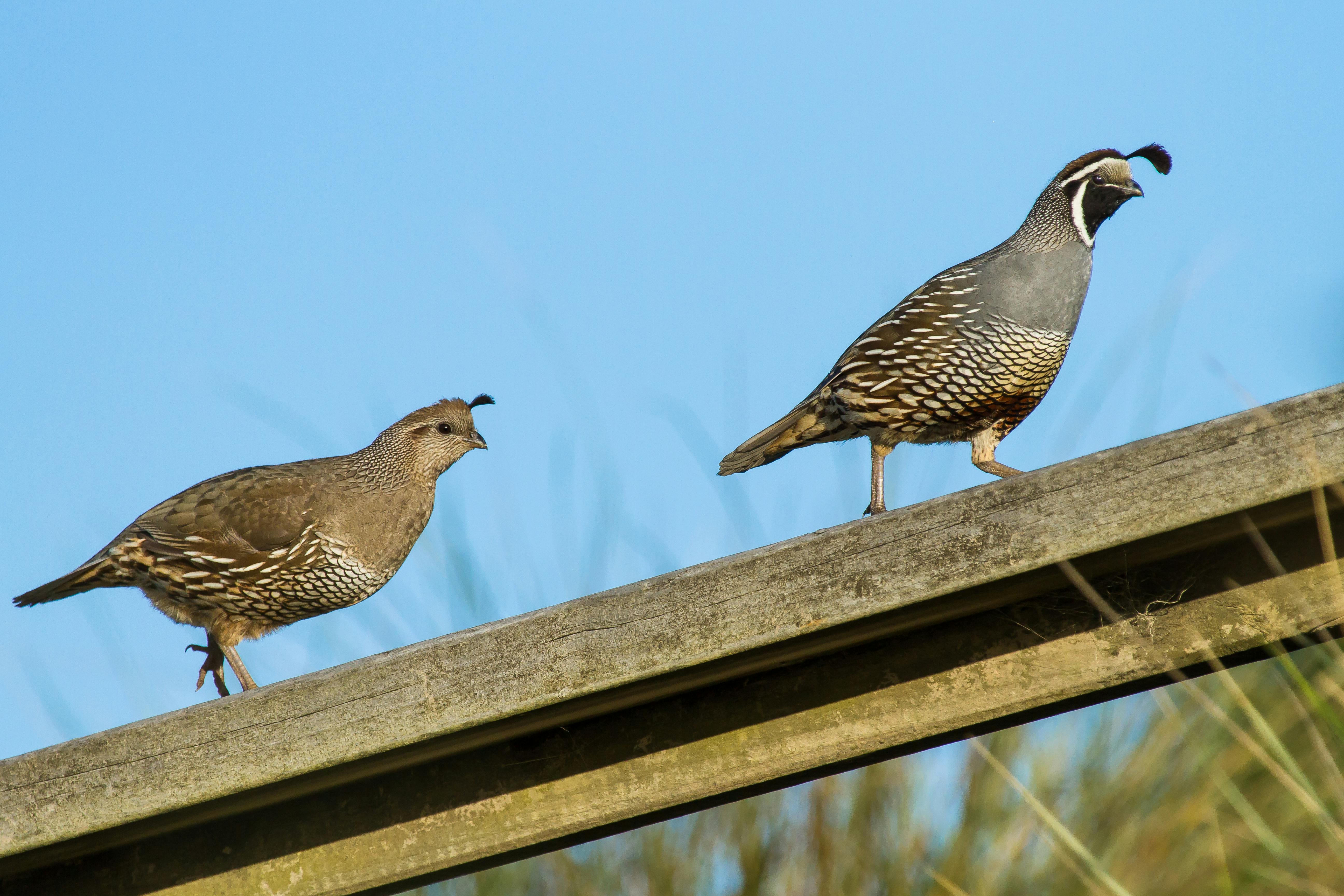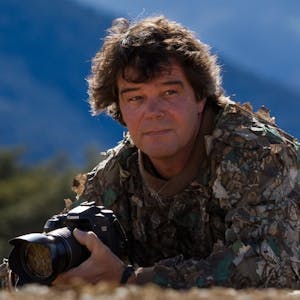The California quail was introduced from England as a game bird in 1862 to provide sport for the settlers. It’s thrived in the rough and scrubby nature of the New Zealand countryside.
Conservation status
Introduced and naturalised.
Features
California quail are about the same size as a blackbird but look plumper. They are predominantly a blue-grey colour with a creamy chest covered in distinctive black scallop shapes giving a mottled appearance when seen from a distance. The female is generally slightly smaller and lacks the black chin strap of the male. This species of quail is best known and recognised by the prominent forward-curling black plume that grows from the top of its head. The male plume is larger than that of the female.
Call
The male quail is more vocal. He likes to do his calling from elevated perches such as fence posts and the tops of shrubs. His most recognised call sounds just like ‘Chi-ca-go’ or ‘Dick-Vercoe’ or ‘qua-quergo’. Other calls made by both sexes include foraging grunts, sharp urgent ‘tut-tut’ warnings and soft ‘tup-tup’ sounds.
Nesting
California quail breed between September and February. During the courtship stage, males are particularly aggressive and often fight one another. Nests are sited on the ground, usually in dense grass or vegetation which makes them particularly vulnerable to predators.
Eggs all hatch at the same time (partly achieved by the chicks calling to each other while still in the egg) and the bumblebee-sized striped chicks leave the nest as soon as they are dry. Chicks are able to fly at just three weeks of age.
Tips birdspotting
Riverbeds with scrubby margins are good places to look for California quail. Orchards are also popular stomping grounds. Birds seen here are often used to human activity and can be surprisingly easy to get close to. Early mornings and late evenings are when the male does most of his calling. Listen for it and you will be able to locate the whole covey of birds.
Diet
Quail feed mainly early in the morning and late in the afternoon, but will spend most of the day foraging when food is scarce. Seeds make up the bulk of their diet, with some added fruit and leaves. Young birds are completely insectivorous early in their life.
Feathery fact
Populations of California quail expanded so rapidly in the 30 years following their introduction that, in 1890, thousands of quail were canned or frozen and exported to London.








